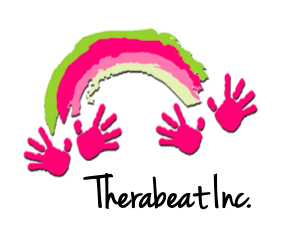The term pediatric oncology is not often a positive topic of conversation. There is grief, pain, anxiety, stress and many more feelings that encompass this topic. Fortunately, music therapy has been proven to help make lives and families experiencing pediatric oncology a more positive experience. Every child with cancer has their own perception of the hospital and treatment, most associate them with pain and anxiety, however, research shows that Music Therapy services have a positive impact on a child’s ability to regulate those experiences. Two articles show very similar concepts of music therapy being integrated into the hospital and the positive outcomes it accomplishes.
Within the multidisciplinary team at a children’s hospital, music therapy is often included. The one difference between music therapy and other disciplines is the prescription of medicine. Tucquet and Leung (2014) described music therapy as addressing “a nonpharmacological approach to symptom management” within the hospital setting (p. 327). Common goals that are addressed within this population consist of increasing emotional support, pain management, parent/child bonding, rehabilitation, anxiety management, procedural support, and self expression (Tucquet & Leung, 2014, p. 330). Music is seen to be a positive avenue for children to actively engage themselves and begin regulating their bodies. Since every child is different, music therapy must be practiced by a trained and certified music therapist that can establish individualized and therapeutic goals for each specific child.
Approaches that music therapists utilize to achieve these goals can look very different. Some interventions include instrument play, song-writing, free improvisation, singing, creating playlists, (Giordano et al., 2020, p. 2) active music engagement, and music relaxation and imagery (2014, p. 328-29). For children receiving radiation, “a personalized music therapy CD” was created (2014, p. 328). Many of these interventions elicit opportunities for self-expression, connecting to the outside world, utilizing coping skills, increasing positive affect and quality of life. Music therapy has been shown to positively engage children inside the hospital, which in turn, has been shown to reduce stress amongst parents. Loewy, as cited in Giordano et al. (2020) stated, “these processes not only refocus the patient’s attention, but also distract from the procedure itself or from the waiting time beforehand and help the child acquire a sense of security and calm for future proceedings” (p. 3). Allowing these children to be a part of something positive is an important component of happiness for the child and their families.
Receiving treatment can be a scary time for children. With the use of music therapy before, during and after invasive procedures, positive outcomes were discovered. In both studies, children were split between a music group and a control group. The findings all positively reinforce the use of music therapy. The children within the music group reported pain and anxiety levels to be lower before and after the procedure (2014, p. 328). Researchers also found that heart and respiratory rates were lower during the procedure, and respiratory rates were lower after the procedure (2014, p. 328). These results show that a response to music therapy can be self-reported as well as measured by physiological changes of the body. Giordano et al. (2020) stated, “None of the interviewees reported a negative opinion on the presence of MT” (p. 3). As the results show, music therapy positively affected these children, but it also provided positive experiences for the parents as well. “Parents reported music therapy also provided an opportunity for family bonding in the midst of an unpredictable and challenging journey . . . and their gratitude toward the program and therapists was highlighted” (2014, p. 332). During the difficult times for these families, having a space for bonding and positive interactions is something hopeful and a time everyone cherishes.
Finally, music therapy is also seen as a way for families to save money and it is beneficial for hospitals as well. It is possible that with the use of music therapy, procedural support time could be reduced which saves time, money and equipment (DeLoach, as cited in Giordano et al., 2020, p. 2). Eventually, children could progressively become more comfortable with procedures and entering the operating room which saves an abundance of time. Giordano (2020) stated “the anesthesiologists in this study observed that the absence of the MT called for a larger amount of anxiolytic drugs, with an increase in the residual effects of anesthesia” (p. 3). Music therapy, alternatively, is much more cost effective than sedation (2020, p. 2). When a child could get to a point to not have to become sedated for a procedure, that would be positive for everyone involved. That is just one other benefit of music therapy.
In conclusion, there can be a light in the middle of the darkest times. Music therapy can provide a child with cancer and their family with peace of mind, comfort, and an avenue for bonding. It is proven, by setting individualized goals and utilizing supportive interventions, music therapy can have positive effects on one's mind and body. It can also be a positive alternative other than methods utilized in pharmaceuticals. Continuing research on this topic is important to education people on the effectiveness of music therapy in pediatric oncology.
References
Giordano, F., Zanchi, B., De Leonardis, F., Rutigliano, C., Esposito, F., Brienza, N., & Santoro, N. (2020). The Influence of Music Therapy on Preoperative Anxiety in Pediatric Oncology Patients Undergoing Invasive Procedures. The Arts in Psychotherapy, 68, 101649–. https://doi.org/10.1016/j.aip.2020.101649
Music Therapy Program - Center for Cancer and Blood Disorders: Children's National Hospital. (2021, March 28). Center for Cancer and Blood Disorders | Children's National Hospital. childrensnational.org/departments/center-for-cancer-and-blood-disorders/programs-and-services/music-therapy (image)
Tucquet, B., & Leung, M. (2014). Music Therapy Services in Pediatric Oncology: A National Clinical Practice Review. Journal of Pediatric Oncology Nursing, 31(6), 327–338. https://doi.org/10.1177/1043454214533424






